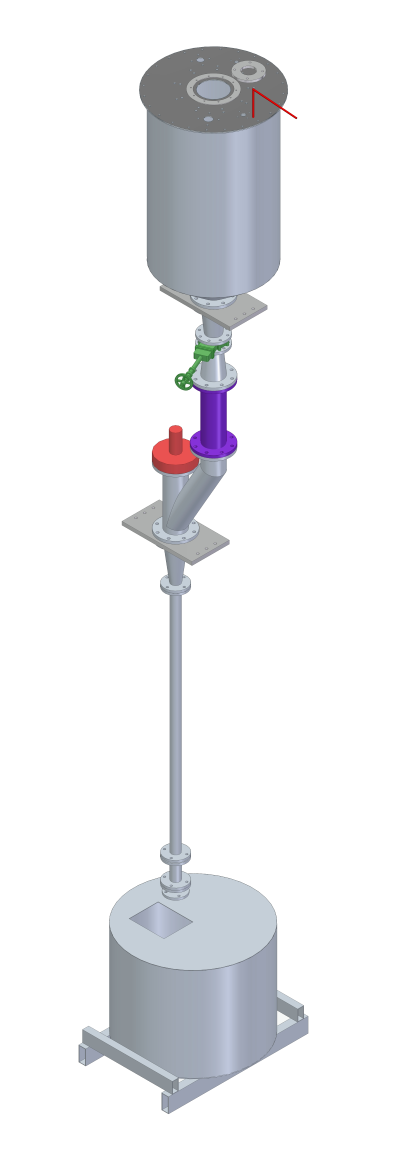Experimental Investigation of a Vertical Electric Heater Concept for Powder Particles in CSP and Energy Storage Applications
Background
Next generation Concentrated Solar Power (CSP) systems are moving towards solid particle technologies to overcome the temperature, cost, and durability limitations of molten salts. Solid particles such as olivine enable operation beyond 700 °C, allowing integration with high-efficiency power cycles (e.g., sCO₂ Brayton cycle) and supporting hybridization with photovoltaics (PV). A key component of such systems is an electric particle superheater, which provides temperature uplift and stability in the particle loop.
The Powder2Power (P2P) Horizon Europe project develops and demonstrates a MW-scale particle-driven CSP prototype at the Thémis solar tower in France. Within this project, KTH has led the design and testing of a Vertical Electric Heater (VEH) on a laboratory scale. VEH concepts promise advantages over horizontal heaters by enabling stable gravity-driven flow, modular scalability, and built-in flow adaptation.
Preliminary experiments at KTH’s Heat and Power Technology (HPT) Laboratory validated the feasibility of VEH prototypes, showing temperature uplifts of 70–110 °C under different flow cone configurations. However, scaling challenges remain, including throughput limitations, structural complexity, and integration into large-scale CSP systems.
Thesis objectives

The thesis aims to experimentally investigate the thermal performance of a Vertical Electric Heater (VEH) for olivine particles and assess its potential for scale-up in CSP and long-duration energy storage applications.
Specific objectives:
-
To evaluate the thermal performance (temperature uplift, heat transfer coefficients, uniformity) of a VEH prototype.
-
To study the influence of design parameters (annular spacing, cone geometry, residence time) on particle heating.
-
To investigate operational stability and safety mechanisms under variable particle flow rates.
-
To derive design guidelines for scaling VEH towards pilot-scale integration in CSP and TES systems.
Research Questions
-
Is the VEH concept feasible for providing stable temperature uplift in particle-based CSP systems?
-
How do flow parameters (residence time, flow cone geometry) affect thermal performance and throughput?
-
What trade-offs arise between temperature uplift and throughput, and how do these inform scale-up design?
-
How can experimental results guide the design of future MW-scale particle heaters within Powder2Power?
Methodology
-
Literature review: Particle-based TES, heat exchangers (moving bed vs. fluidized bed), and electric particle heaters.
-
Experimental campaign:
-
Use of KTH’s 7 m-high VEH rig equipped with annular-gap heating element, flow cones, thermocouples, and automated PLC control.
-
Cold-flow and hot-flow tests with olivine particles (various fractions).
-
Variation of cone outlet diameters to control residence time and mass flow rate.
-
Measurements: Mass flow, outlet bulk temperature, temperature uplift, and heat transfer coefficients.
-
-
Data analysis: Comparison of experimental performance with theoretical models of packed/moving bed heat exchangers.
-
Scale-up discussion: Application of results to 300 kW–MW-scale designs in P2P, considering modular VEH columns vs. direct TES tank immersion.
Expected Outcomes
- Quantified performance of VEH prototype under controlled conditions.
- Identification of optimal annular spacing and flow cone geometry for achieving desired temperature uplift.
- Assessment of stability, safety, and operational adaptability of VEH design.
- Recommendations for industrial-scale design and integration within the Powder2Power project.
Duration
The project should start in January 2026, and should not extend for more than 6 months. Specific earlier starting date could be discussed.
Location
KTH, Department of Energy Technology
